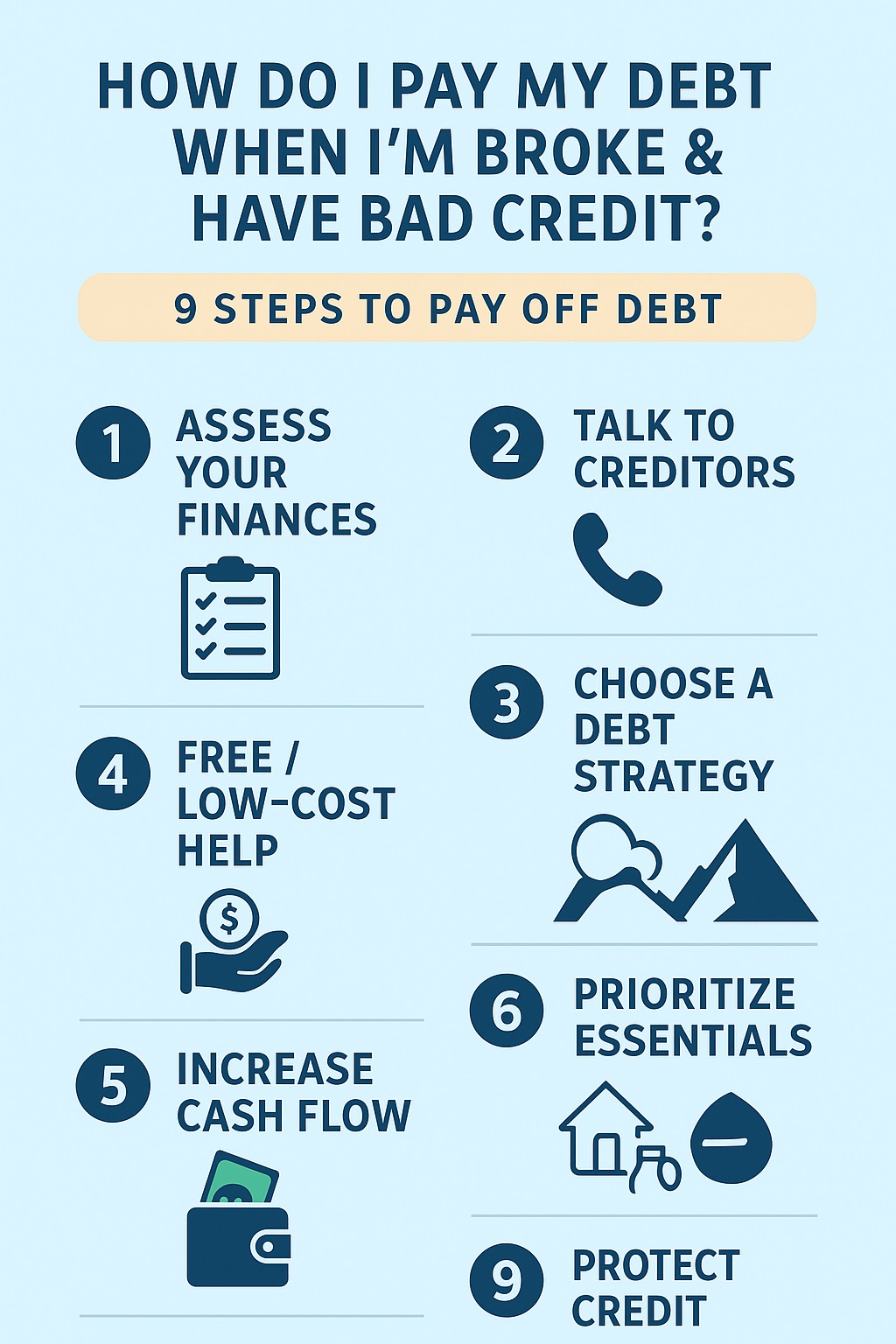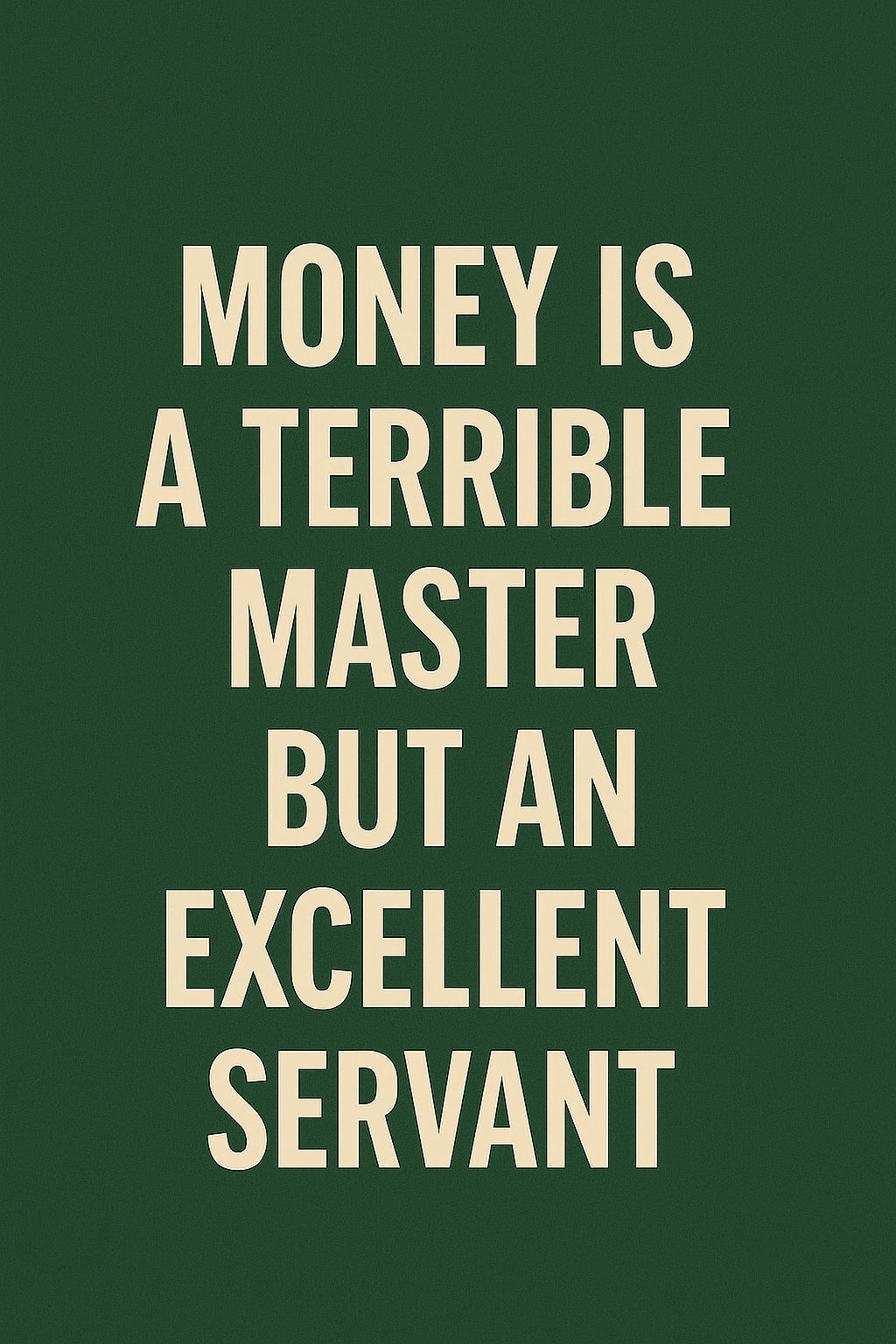Being broke and struggling with bad credit can feel like a trap you can’t escape. Every bill seems overwhelming, calls from creditors are stressful, and the thought of improving your financial situation feels impossible. But the truth is, even in the toughest financial situations, you can start taking steps to manage and eventually pay off your debt. This guide gives real, practical advice that works—no gimmicks, no scams—just clear steps to get back on track.
1. Assess Your Financial Situation Honestly
The first step to regaining control is knowing exactly where you stand.
- List all your debts: Include credit cards, personal loans, payday loans, medical bills—every debt counts.
- Track your income and essential expenses: How much money do you really have to work with each month? Be thorough; even small expenses add up.
- Use tools to organize: Budgeting apps like Mint or You Need A Budget can simplify tracking. If you prefer, a simple spreadsheet works too.
Understanding your starting point gives you the clarity you need to make real progress.
2. Communicate With Your Creditors
One of the most overlooked steps when you’re broke is reaching out to your creditors. You might feel embarrassed, but being proactive is far better than ignoring the problem.
- Explain your hardship: Let them know you’re struggling financially. Many creditors have hardship programs.
- Request lower interest rates or payment plans: Even a small reduction can make payments manageable.
- Stay professional and consistent: Keep records of your conversations and any agreements in writing.
Creditors often prefer a negotiated payment over having to pursue collections. Taking the first step can reduce stress and save money.
3. Choose a Debt Repayment Strategy
Even with limited funds, having a plan helps you move forward. Two popular strategies are:
- Debt Snowball: Pay off your smallest debts first while making minimum payments on the larger ones. This gives a psychological boost as you clear each account.
- Debt Avalanche: Focus on debts with the highest interest rates first. This saves money on interest over time.
Tip: If you’re broke, even paying a small amount consistently is progress. It signals action to creditors and builds momentum for bigger payments later.
4. Explore Low-Cost or Free Debt Relief Options
You don’t have to navigate debt alone. There are legitimate, low-cost, or free ways to get help:
- Nonprofit credit counseling services: Organizations like the National Foundation for Credit Counseling (NFCC) provide guidance and budgeting help.
- Local community programs: Some communities offer utility or rent assistance for low-income households.
- Avoid scams: Be wary of companies promising “debt elimination” for upfront fees—they often make your situation worse.
5. Increase Your Cash Flow Without Taking More Debt
When funds are tight, the goal is to increase income without borrowing more. Options include:
- Side gigs and freelance work: Food delivery, rideshare driving, online freelancing—whatever fits your schedule.
- Sell unused items: Old electronics, furniture, or clothes can generate quick cash.
- Negotiate bills: Call your utility, phone, and internet providers to ask for lower rates or hardship plans.
Even small gains can make a difference in paying down debt and avoiding late fees.
6. Prioritize Essential Payments
When money is limited, protecting essentials comes first:
- Housing (rent/mortgage)
- Utilities (electricity, water, internet)
- Groceries
- Transportation
Skipping essentials usually leads to higher costs and stress. Once essentials are covered, allocate whatever is left to debt repayment.
7. Protect Your Credit While Paying Off Debt
Even if your credit is already bad, taking steps to protect it is crucial:
- Make at least minimum payments: Avoid collections that can further damage your score.
- Don’t close old accounts unnecessarily: Length of credit history matters.
- Monitor your credit reports: Check for errors or fraudulent accounts. You’re entitled to a free report annually at AnnualCreditReport.com.
8. Consider Professional Help If Needed
Sometimes you need structured guidance:
- Debt Management Programs (DMPs): Nonprofits can consolidate payments and negotiate lower interest rates.
- Bankruptcy: Should only be considered as a last resort. It can give a fresh start but has long-term consequences.
Real advice: Only pursue professional solutions from reputable organizations. Research before committing.
9. Stay Motivated and Track Progress
Debt repayment is a marathon, not a sprint. Celebrate small wins:
- Paid off a small account? That’s progress.
- Reduced interest rates? You’re saving money.
- Even one consistent payment per month? That’s momentum.
Small, consistent steps lead to bigger financial freedom over time.
Conclusion
If you’re asking “how do I pay my debt when I am broke and have bad credit?”, know this: you are not alone, and there are real solutions. Start by understanding your finances, communicating with creditors, increasing income, and taking small, consistent actions. Over time, even limited funds can make a real impact, and your credit can recover.
The key is to start today, take control, and stay persistent. Every step, no matter how small, moves you closer to freedom from debt.



